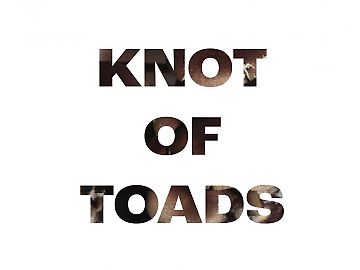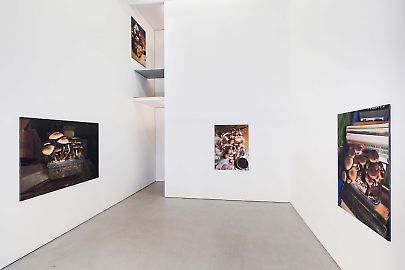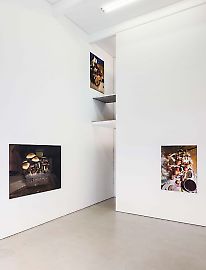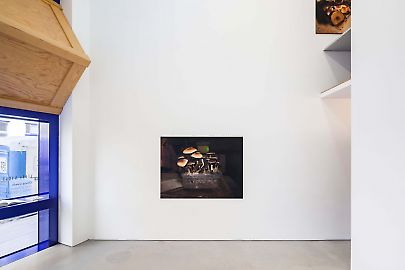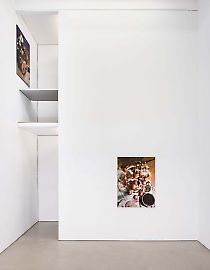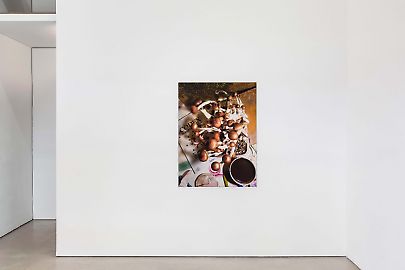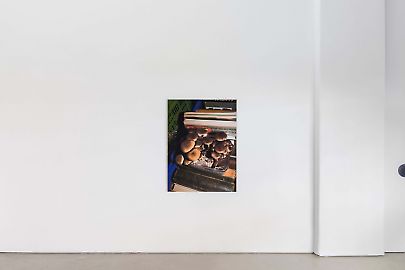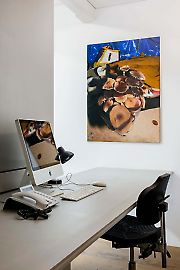Olivia Coeln -- KNOT OF TOADS
In her new series Knot of Toads, Olivia Coeln offers us not piles of toads as suggested in the title, but similarly arranged clusters of psilocybin mushrooms, fused together, multi-headed and no longer identifiable as individual plant or fungi. Embedded in everyday ecologies, these allude to the potentials of imaging, imaginary spaces, and their social and material dimensions. Referring to ecologies in this context offers us a way to stop distinguishing between human influence and natural growth, and instead consider their mutual interplay.
A popular meme over the past two years, which has haunted me and others on the various media platforms we use, depicts a man sitting in a little pond, who in posture and countenance resembles a Buddha statue. The bent knees, bare torso and head are visible above the surface of the water and simultaneously fill it, green plants dangle over the edge of the pond as well as over the man in the image, framing both, and assorted water features and decorative elements suggest a private space designed according to specific preferences. “Unbothered. Moisturized. Happy. In My Lane. Focused. Flourishing” reads the caption (borrowed from a slightly older, text-only tweet by someone else entirely). Before long, the inevitable iterations of the image substituted the thriving bather with other creatures in the water: reptiles, crocodiles on pool mattresses, fantasy creatures with glistening skin, each similarly adapted to their habitat in some unusual way and seemingly content therein.
If we think of this habitat as a fungal network where human and non-human actors participate in an exchange of nutrients, knowledge and resources, we challenge both the image of nature as a passive, mechanical backdrop for human activity, as well as the idea of the human actor in front of this backdrop. This actor, whose familiarity with non-human agents extends only to the ways they have enabled him to have experiences he desires – i.e. ayahuasca rituals, as opposed to the limits of his abilities – was recently confronted with the global spread of a virus to which his highly conscious body was as susceptible as anyone else’s, a reality that not all breath practitioners and asana healers have overcome. The special bodies of the influencers, which always seemed to need food from the other side of the world in order to be detoxified and at full potential, well-regulated and self-determined, turned out to be fanciful monads, the kind that wanted to thrive primarily as individuals. Whereas the meme, its list of priorities, but also the fungal cultures in Olivia Coeln’s photographs thrive in interstitial spaces, alongside others, evolving in an environment which depends on them, and they on it.
Anke Dyes
Translated by Signe Rose


